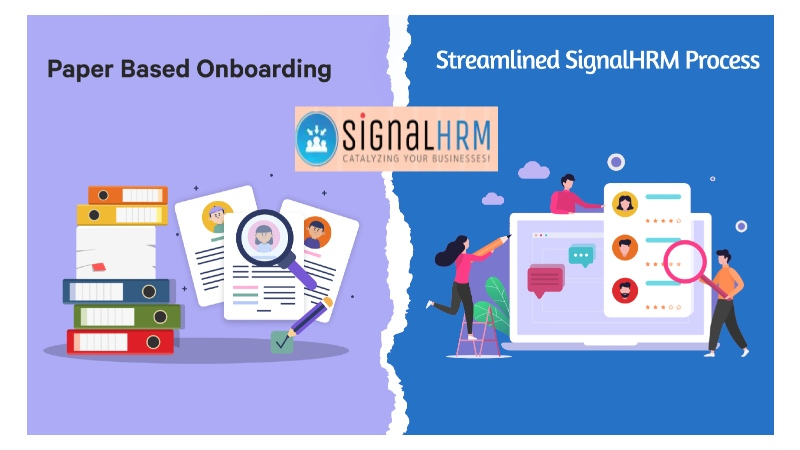
Companies need to invest in advanced technology to offer an effective and structured onboarding process to their employees. Onboarding doesn’t merely mean completing the paperwork, it involves creating a meaningful experience for the newcomers, making it easy to adapt to the new work culture. In this blog, we’ll discover how organizations can use technology to streamline the onboarding process to engage employees.
A cloud-based platform:
Use a cloud-based platform i.e. HRMS management software to store and organize the information of the new employees and provide them access to the employee portal from anywhere facilitating remote and hybrid work culture. Also, the HRMS software easily integrates with other modules such as biometric machines, attendance management systems, and learning management systems.
Automate workflows: HRs can use technology to send welcome emails, allot tasks within specified deadlines, track and monitor progress, and create reports. This ensures that new employees complete all the necessary processes and share details of onboarding activities
Offer Interactive Learning Content: Offer interactive content that can help new employees understand the company, work culture, and other important details. Organizations can use technology to create multimedia content along with social tools such as forums, video calls, and chats to enhance communication and collaboration in the team.
Gamification: Adding elements such as points, rankings, badges, leveling up, and challenges makes the onboarding process fun and competitive for the employees. The employees feel a sense of accomplishment when handling new challenges. Gamification not only engages the employees, but also reduces turnover, enhances engagement, and makes it easy to share feedback, fostering a positive environment.
Gather feedback: Using Google Forms, SurveyMonkey, and Poll Everywhere, the HR department can create surveys and pools to accumulate the feedback of the employees and improve the onboarding process. HRMS dashboards and analytics can be used to visualize, create reports, and get insights from the feedback.
Project Management Tools: It is important to have an organized onboarding process for a couple of weeks when the new employees join. Create tasks and timelines in which they must be completed to help the new hires adjust. A project management system enables the HRs to track the progress and ensure all the tasks are completed within timelines
Learning Management Systems: Learning management systems play a vital role in helping new employees adapt to the organization through onboarding, assessment, and training. With onboarding LMS, the HR professionals can create and share training resources to foster the company culture and assess the new employees immediately. Online courses prove helpful in remote onboarding as they enable new hires to undergo training at their own pace.
Digital Training Platforms: Effective onboarding needs targeted training to train the employees well. Interactive online learning programs enable employees to acquire information. For example, developing online training programs that imitate real-life situations and need quick responses speeds up the onboarding process by using effective techniques to onboard employees.
Digital Signatures: Digital signatures enable the employees to sign the documents from anywhere. They eliminate all the hassles of manual signature, lower carbon footprint, and are highly convenient ensuring all the parties can access the documents in a few clicks. Digital signature technology involves an automated authentication method that provides passwords and PINs to verify identity, guaranteeing a smooth onboarding.
Though the HRs can rely on the above-mentioned technology to manage the onboarding process, however, they must retain the human touch to develop trust and rapport with the recruits. Respect the emotions of the new employees, show empathy, and celebrate milestones to make them feel valued. Lastly, a structured approach to digital onboarding is imperative for the overall success.